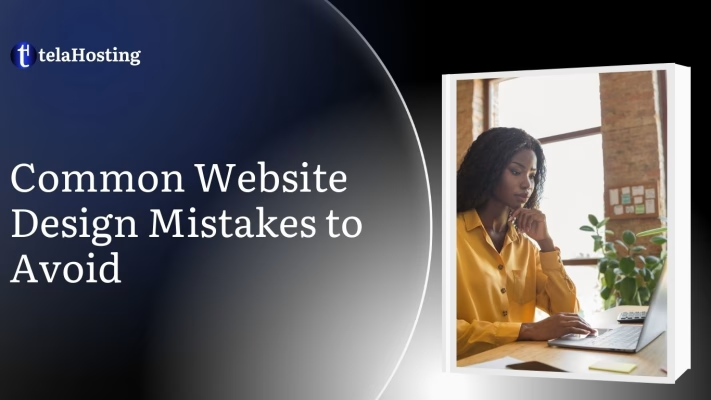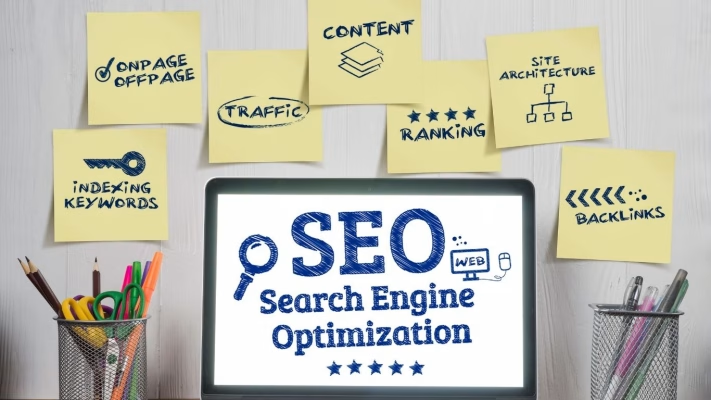
A well-designed website is essential for any business, especially in today’s digital world. Your website is your online storefront; it creates the first impression of your brand, influences customer decisions, and determines how well you engage visitors. However, many website owners and designers make common mistakes that can hurt user experience, slow down site performance, and reduce conversions.
If you want to build a website that attracts, retains, and converts visitors, you must avoid these common website design mistakes. In this guide, we’ll highlight common website design mistakes and show you how to fix them.
Let’s dive in!
Common Website Design Mistakes to Avoid
1. Ignoring Mobile-Friendliness

One of the website design mistakes that many businesses focus on is designing websites that look great on desktops but fail to consider mobile users. This results in a poor user experience for visitors accessing the site from their smartphones or tablets. A website that is not mobile-friendly may appear distorted, difficult to navigate, or require excessive zooming and scrolling.
Why It’s a Problem:
- More than 50% of global web traffic comes from mobile devices. If your website isn’t mobile-optimized, you are losing half of your potential customers.
- Google prioritizes mobile-friendly sites in search rankings. If your website doesn’t meet mobile usability standards, you will rank lower in search results, making it harder for people to find your business.
- Mobile users expect a smooth and intuitive experience. If they struggle to use your site, they will leave and go to your competitors.
How to Fix It:
- Use responsive design so your website adjusts automatically to different screen sizes.
- Test your site on various mobile devices to ensure proper functionality.
- Use Lighthouse to check if your website meets mobile usability standards.
- Keep buttons large and clickable, and avoid small fonts that are hard to read on smaller screens.
- Optimize images and media files to ensure fast loading on mobile devices.
2. Slow Website Speed
A website that takes too long to load can frustrate visitors and drive them away before they even get to see your content. Slow websites can be caused by poor hosting, unoptimized images, excessive scripts, or too many plugins.
Why It’s a Problem:
- 53% of users abandon a site if it takes more than 3 seconds to load.
- Search engines rank slow websites lower, affecting SEO and reducing your visibility.
- A slow site creates a bad user experience, which can reduce conversions and customer satisfaction.
How to Fix It:
- Optimize images by compressing them without reducing quality.
- Minimize HTTP requests by reducing the number of elements on each page.
- Use fast, reliable hosting (like telaHosting) to ensure top performance.
- Enable caching and Content Delivery Networks (CDNs) for faster load times.
- Remove unnecessary plugins that slow down the website.
3. Poor Navigation and Structure
A poorly structured website makes it difficult for visitors to find the information they need. If your navigation menu is cluttered, disorganized, or missing key pages, users may leave out of frustration.
Why It’s a Problem:
- Visitors get confused and may leave the site quickly (high bounce rate).
- Search engines struggle to index your site properly, affecting SEO rankings.
- It reduces user engagement and conversions.
How to Fix It:
- Keep your menus simple, well-organized, and easy to navigate.
- Use breadcrumb navigation to guide users through your site.
- Ensure key pages (Home, About, Contact) are easy to find and accessible from every page.
- Include a search bar to help users quickly find specific content.
4. Overloading the Website with Too Much Content
Some websites try to cram too much information, too many images, and excessive features onto a single page. This overwhelms visitors and makes the website look cluttered and unprofessional.
Why It’s a Problem:
- Visitors get overwhelmed and may leave without engaging with your content.
- Too much content slows down the website, reducing performance.
- Important information gets lost in the clutter, making it harder for users to find what they need.
How to Fix:
- Keep your design clean, simple, and focused on key information.
- Use whitespace to make content more readable and visually appealing.
- Prioritize quality over quantity, focus on essential information, and remove unnecessary elements.
5. Using Low-Quality or Stock Images
Some websites rely too much on generic stock photos or use low-quality images that reduce credibility.
Why It’s a Problem:
- Poor-quality images make your website look unprofessional and untrustworthy.
- Stock images don’t create a unique brand identity.
- Visitors may lose interest if they see the same stock photos used on other sites.
How to Fix It:
- Use high-quality, original images whenever possible.
- If using stock photos, choose authentic, professional images that match your brand.
- Optimize images for web use to ensure they don’t slow down your site.
6. Poor Readability and Bad Typography
Using fonts that are too small, too fancy, or hard to read makes it difficult for visitors to consume your content.
Why It’s a Problem:
- Visitors leave quickly if they struggle to read the text.
- Poor typography makes the website look unprofessional.
- Bad readability affects SEO and engagement.
How to Fix It:
- Use clear, legible fonts like Arial, Roboto, or Open Sans.
- Stick to 2-3 font styles for consistency.
- Use a good contrast between text and background colors.
- Ensure paragraph text is at least 16px for readability.
7. No Clear Call-to-Action (CTA)

Many websites fail to guide visitors on what action to take next.
Why It’s a Problem:
- Visitors may not know where to go next.
- You lose potential conversions (sales, leads, and sign-ups).
How to Fix It:
- Use clear and action-oriented CTAs, such as:
“Get Started Now”
“Contact Us Today”
“Sign Up for Free”
- Place CTAs strategically (above the fold, at the end of pages, inside blog posts).
- Make CTA buttons stand out with contrasting colors.
8. Not Optimizing for SEO

Ignoring search engine optimization (SEO) can make it difficult for people to find your website.
Why It’s a Problem:
- Low visibility in Google search results.
- Less organic traffic and fewer potential customers.
How to Fix It:
- Use SEO-friendly URLs.
- Optimize meta titles and descriptions with relevant keywords.
- Use alt text for images to improve accessibility and rankings.
- Create valuable, keyword-rich content
9. Annoying Pop-Ups and Auto-Playing Media
Some websites bombard visitors with too many pop-ups, auto-playing videos, and intrusive ads.
Why It’s a Problem:
-
Interrupts the user experience.
-
Slows down the website.
-
Google may penalize sites with excessive pop-ups.
How to Fix It:
- Use pop-ups sparingly (only when necessary).
- Ensure videos don’t auto-play (let users choose).
- Avoid aggressive ads that cover content.
10. Not Having a Secure Website (SSL Certificate)
A website without HTTPS (SSL certificate) is not secure, making visitors hesitant to share personal information.
Why It’s a Problem:
-
Visitors may see a warning message in their browser.
-
Google ranks secure sites higher than unsecured ones.
-
Customer trust is reduced.
How to Fix It:
- Get an SSL certificate (many hosting providers like telaHosting offer it for free).
- Ensure all pages load with HTTPS instead of HTTP.
- Use secure payment gateways for e-commerce sites.
Conclusion
Your website is your brand’s online home. Avoiding these common website design mistakes will help you create a professional, fast, and user-friendly website that keeps visitors engaged and converts them into customers.
If you need fast, secure, and reliable web hosting in Nigeria, we at telaHosting provides top-quality hosting solutions to ensure your website performs at its best. Let’s help you build a website that works!
FAQs
1. What is the most common website design mistake?
Not making a website mobile-friendly is one of the biggest website design mistakes, as many users browse on smartphones.
2. How do I improve my website speed?
Use fast hosting, optimize images, enable caching, and reduce unnecessary plugins.
3. What is the best font size for a website?
At least 16px for body text to ensure good readability.
4. How do I improve my website’s SEO?
Use SEO-friendly URLs, relevant keywords, meta tags, and high-quality content.
5. Why do I need SSL for my website?
SSL ensures your site is secure, trusted, and ranks better on Google.
Need help with your website? Get fast and reliable hosting with telaHosting today!